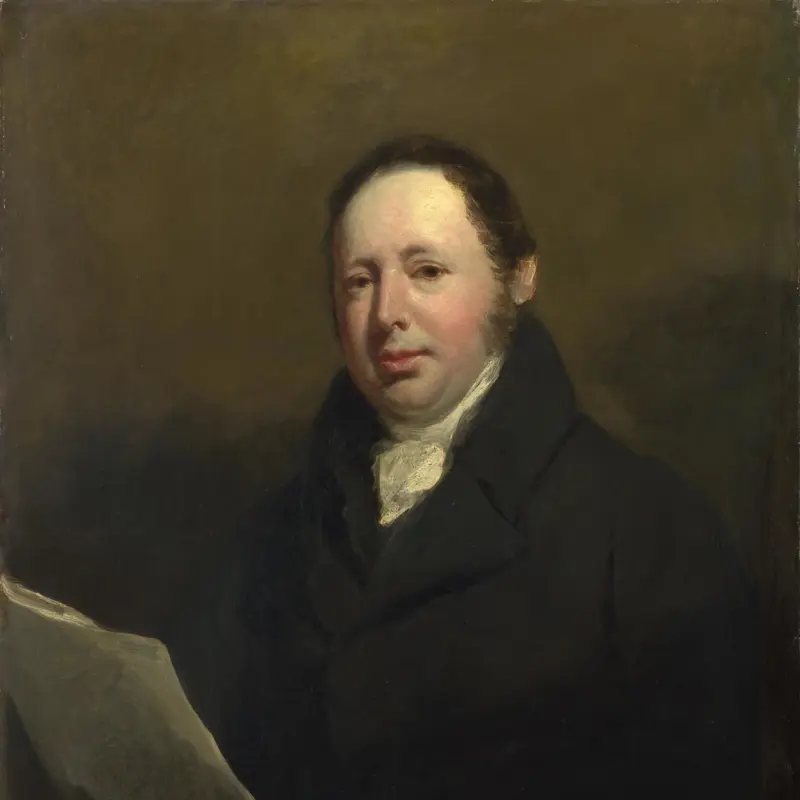John Jackson, 'Reverend William Holwell Carr', about 1827-8
About the work
Overview
The Reverend William Holwell Carr (1758–1830) was the son of an Exeter apothecary. In 1797 he married Lady Charlotte Hay, eldest daughter of the 15th Earl of Erroll and his wife Isabella Carr. The following year Lady Charlotte inherited large Carr estates in Northumberland.
From about 1805, Holwell Carr was a ‘gentleman-dealer’ in paintings. As an amateur painter himself, he may also have touched up and restored pictures. He became one of the founding subscribers to the British Institution and lent generously to the Institution’s exhibitions of old masters.
His collection included Titian’s Holy Family and a Shepherd, Claude’s Landscape at the Cave of Adullam, Tintoretto’s Saint George and the Dragon and Rembrandt’s Woman bathing in a Stream. These were among the 35 paintings Holwell Carr bequeathed to the National Gallery six years after its foundation. He commissioned this portrait of himself when he was about 70 to be placed in the Gallery with his pictures.
Key facts
Details
- Full title
- Reverend William Holwell Carr
- Artist
- John Jackson
- Artist dates
- 1778 - 1831
- Date made
- about 1827-8
- Medium and support
- oil on canvas
- Dimensions
- 75.6 × 62.9 cm
- Acquisition credit
- Holwell Carr Bequest, 1831
- Inventory number
- NG124
- Location
- Not on display
- Collection
- Main Collection
- Previous owners
Provenance
Additional information
Text extracted from the ‘Provenance’ section of the catalogue entry in Judy Egerton, ‘National Gallery Catalogues: The British Paintings’, London 2000; for further information, see the full catalogue entry.
Bibliography
-
1946Davies, Martin, National Gallery Catalogues: British School, London 1946
-
1956H.C. Morgan, Life and Works of John Jackson RA, Phd Thesis, University of Leeds 1956
-
1959Davies, Martin, National Gallery Catalogues: British School, 2nd edn (revised), London 1959
-
2000Egerton, Judy, National Gallery Catalogues: The British Paintings, revised edn, London 2000
-
2001
C. Baker and T. Henry, The National Gallery: Complete Illustrated Catalogue, London 2001
About this record
If you know more about this work or have spotted an error, please contact us. Please note that exhibition histories are listed from 2009 onwards. Bibliographies may not be complete; more comprehensive information is available in the National Gallery Library.

